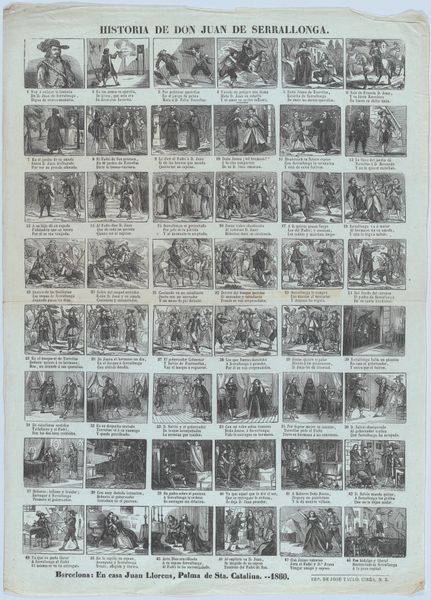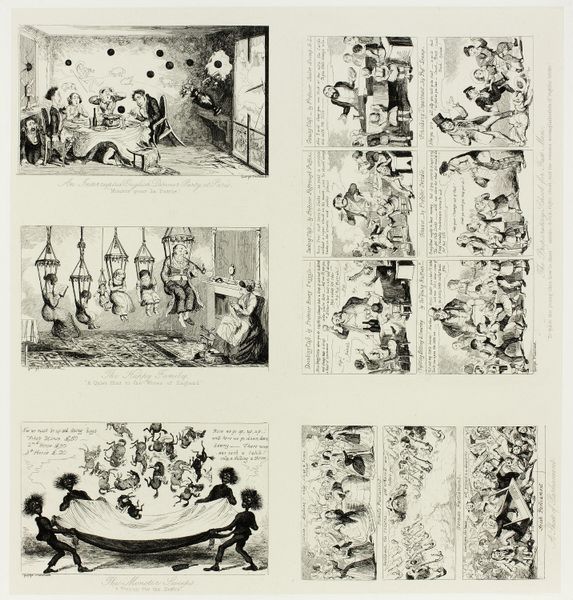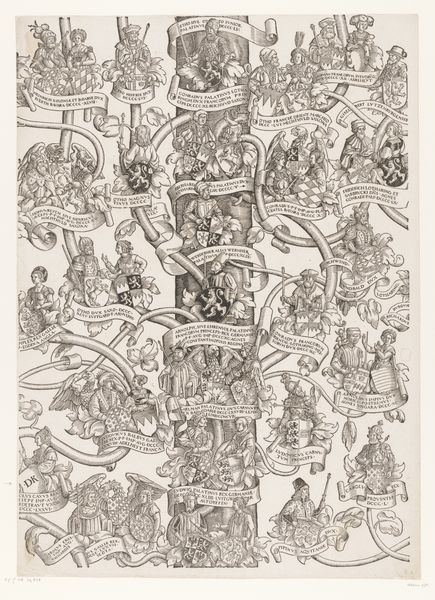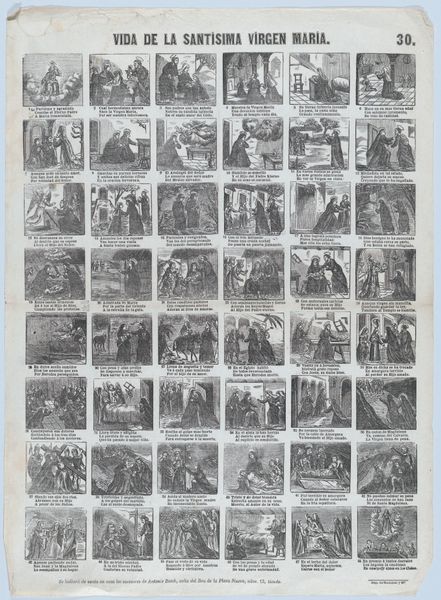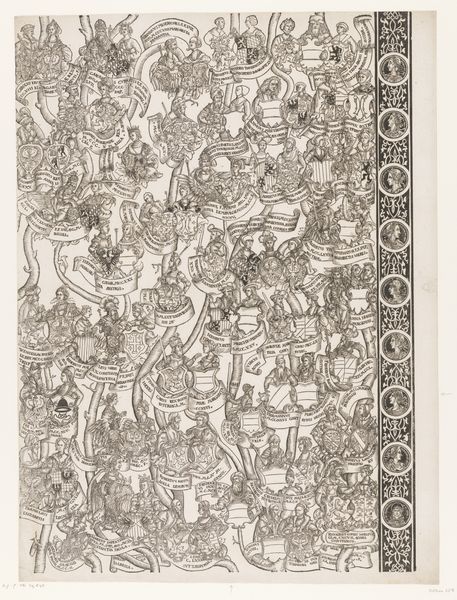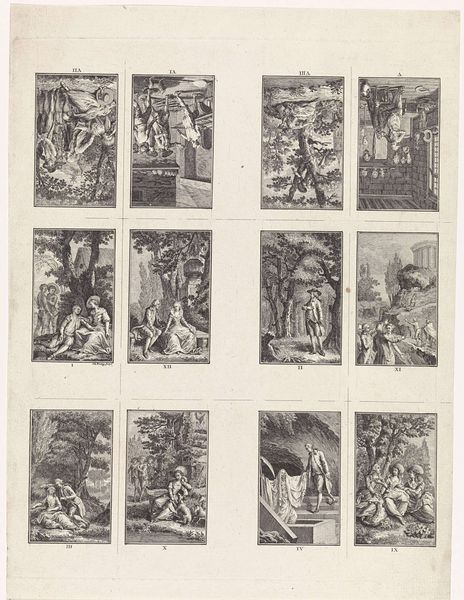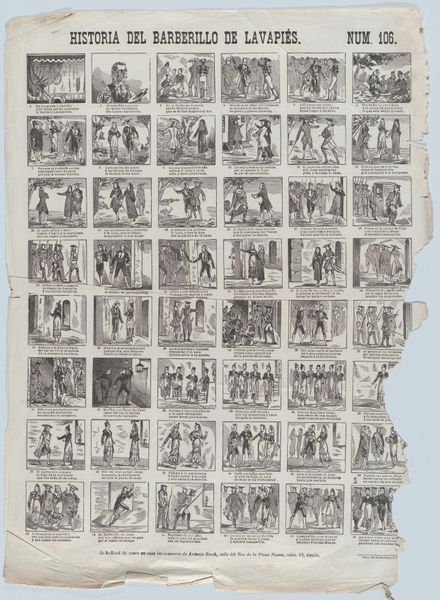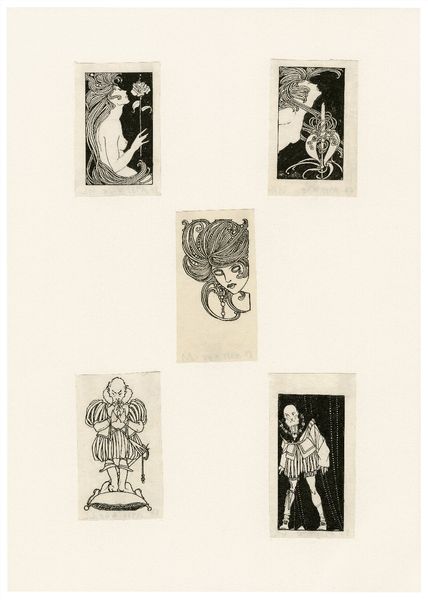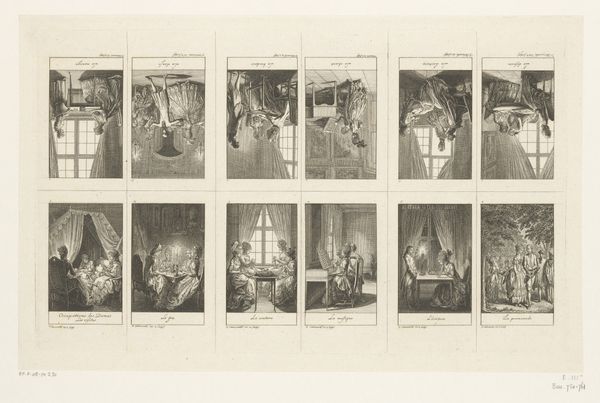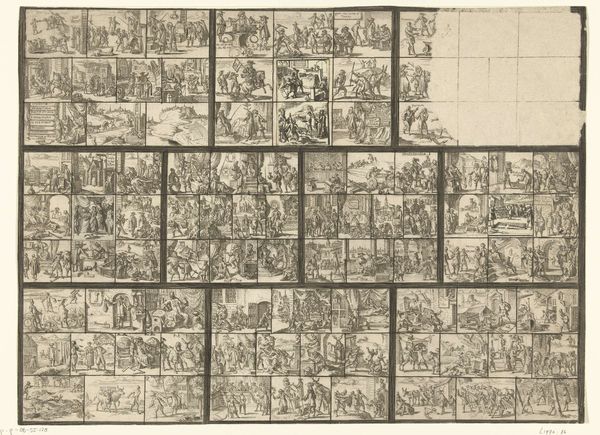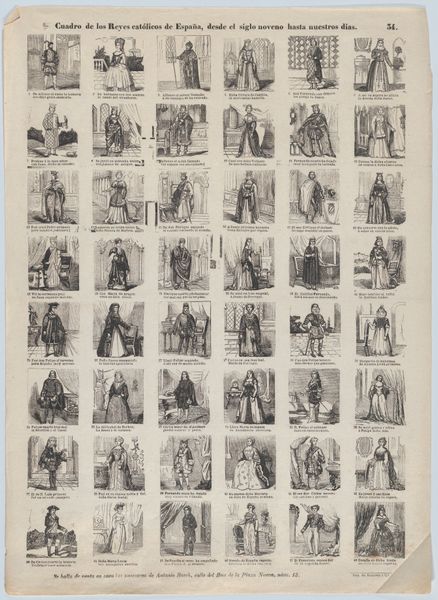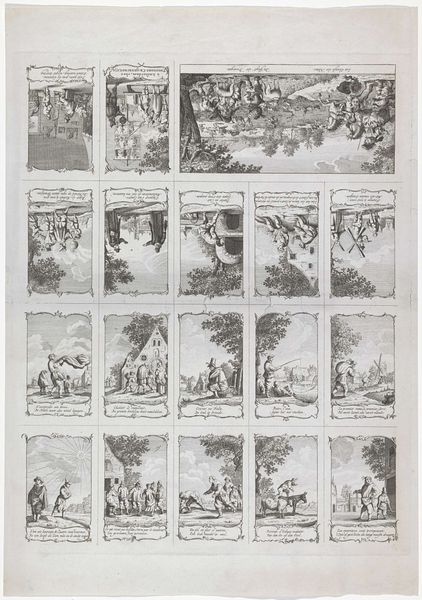
drawing, print, paper, graphite
#
portrait
#
drawing
#
hand drawing
# print
#
charcoal drawing
#
figuration
#
paper
#
charcoal art
#
geometric
#
abstraction
#
graphite
#
tattoo art
#
modernism
Dimensions: image: 587 x 403 mm sheet: 642 x 433 mm
Copyright: National Gallery of Art: CC0 1.0
Curator: This compelling piece, titled "Hands," was created by Howard Warshaw in 1951 using graphite, charcoal and print on paper. What strikes you first about it? Editor: The sheer number of individual depictions immediately overwhelms the eye! The geometric arrangement imposes a strict grid on what could otherwise be quite chaotic. It’s a stark, high-contrast composition, drawing attention to the stark duality and inherent drama within the figures. Curator: Indeed. During that time, Warshaw grappled with post-war anxieties, reflecting existential concerns and the human condition after global conflict. The choice of hands as subject is deliberate: they are tools for creation, but also for destruction. Editor: I can appreciate that connection. It makes me think about their texture: you’ve got deep blacks against almost bleached-white paper. How do these distinct tonal zones guide us through the piece? Curator: Warshaw’s approach challenges conventional figuration, using modernist techniques to deconstruct and abstract human forms. He aimed to visualize our multifaceted identities, exploring psychological tension in each expressive hand gesture. What appears simple carries social implications of labor, identity, and resistance, especially when situated amidst societal upheaval of that time. Editor: Your socio-historical approach makes it quite thought-provoking. But look closer at each block. The treatment and rendering, despite the grid format, have inconsistencies, and the tonal value variations feel expressive. Do you see it? Curator: Absolutely. We can't forget about semiotics, right? Each subtle variation underscores Warshaw's social commentary; a reminder that actions always possess significant meaning and impact, regardless how grand or negligible they appear initially. Editor: I am also seeing that this work reflects so many ideas from cubism and surrealism in it—not a photorealistic study. In each of the block variations there is an exploration of geometry. Curator: A formalist perspective illuminates how those aesthetics translate complex ideas about personal liberty within an increasingly standardized society; where, ironically, physical expression grows controlled regardless social unrest around such freedoms—powerful considerations! Editor: What a dynamic intersection of structure and agency; of geometry and emotion. Curator: Yes, and understanding "Hands," it is essential to observe the political forces shaping artistic expression and humanist movements. Editor: Considering our conversation, a fresh perspective has certainly been acquired; with new understanding around aesthetic impact intertwined within critical narratives shaping modern expression through both context and approach.
Comments
No comments
Be the first to comment and join the conversation on the ultimate creative platform.
